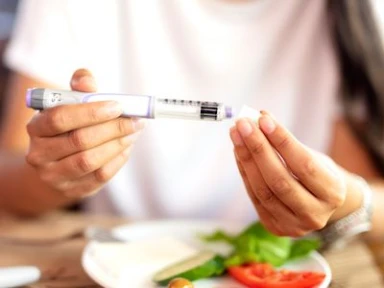Management of athletes and active people with diabetes - The American Medical Society for Sports Medicine (AMSSM) scientific statement
Key takeaway
This evidence-based scientific statement by the AMSSM panel* highlights the following key points that need to be considered in athletes with diabetes:
-
Number of athletes with T1D in high school and college sports may be same as individuals with T1D in general population
- Medical evaluation before low to moderate exercise is not needed in patients receiving regular care
- Resistance exercise lowers A1C levels in T1D
- Vigorous exercise necessitates reduction in basal insulin
- Newer medications for T2D need no doseadjustment
Institutions should train sports personnel and provide an emergency action plan (EAP) for athletes with diabetes and possible hypoglycemia.
Why this matters
Management of diabetes poses a challenge for both, athletes, and HCPs
Exercise-barriers:
- Hypoglycemic fear
- Loss of glycemic control Insufficient time/facilities/ motivation
- Poor knowledge on exercise management
Management risks:
- Hypoglycemia
- Hyperglycemia
- Potential diabetic ketoacidosis
- Chronic health issues (including microvascular and macrovascular disease)
This article reviews the current knowledge and gaps in management issues for athletes and physically active people with diabetes, including, benefits and risks of exercise, use of newer technologies, nutrition, and rehabilitation issues.
Key Results
Prevalence
- T1D and T2D in individuals ≤19 years = 3.22/1000 and 0.46/1000, respectively
- T1D among college-age student athletes = 3.42/1000
Benefits and risks of exercise with diabetes
Benefits
- Aerobic training increases insulin sensitivity
- HIIT promotes skeletal muscle oxidative capacity, insulin sensitivity, and glycemic control in adults with T2D, and can effectively minimize the risk of a hypoglycemic episode
- Resistance training may reduce the acute risk of exercise-related hypoglycemia in T1D
Risks
- Potential for exercise-related hypoglycemia (in insulin users and T1D)
- Skin perfusion and impaired sweating (in T1D)
- Increased risk of heat-related illness during exercise (in patients with T2D, older, with poorer blood glucose management, or having neuropathy)
Diabetes and exercise
- Pre-exercise screening
- Recommended activities for diabetes
- Impact of exercise on blood glucose
- Nutritional practices and performance
Blood glucose targets for athletic participation
Frequent glucose monitoring, coupled with small boluses of rapid-acting insulin, may be required to recover from exercise-related fluctuations and prevention of complications.
Before exercise
- Blood should be sampled 2 to 3 times at 30 min intervals.
- Start exercise if blood glucose is >90 mg/dL.
- Pre-exercise blood glucose level 100−250 mg/dL is safe; >250 mg/dL, causes significant osmotic diuresis and higher risk for dehydration and development of blood ketones.
During exercise
- Check blood glucose levels every 30 min.
- For every 30 min of exercise, 15 to 30 g of carbohydrate may be needed.
Exercise cessation
- Monitor glucose every 2h and up to 4 h to assess delayed hypoglycemia.
- For sessions >35 to 45 min, replenish with 40 to 80 g of carbohydrate intake after exercise cessation.
Diabetes medications, technologies and exercise
- Dose adjusment
- Associated risks
- Newer technologies
- Rehabilitation considerations
Recommendations for special population
Master athletes
- Closer monitoring of blood glucose during and after physical activity
- Wearing a medical alert identification to assist with emergency-care
Student athletes
- Annual education and training of athletics personnel on diabetic emergencies
- Development of well-rehearsed, venue-specific EAPs
- Trojian T, Colberg S, Harris G, Oh R, Dixit S, Gibson M, et al. American Medical Society for Sports Medicine position statement on the care of the athlete and athletic person with diabetes. Clin J Sport Med. 2022;32(1):8–20. doi: 10.1097/ JSM.0000000000000906. PMID: 34930869.




.jpg/jcr:content/diabetes%20thumb%20new%20(1).jpg)